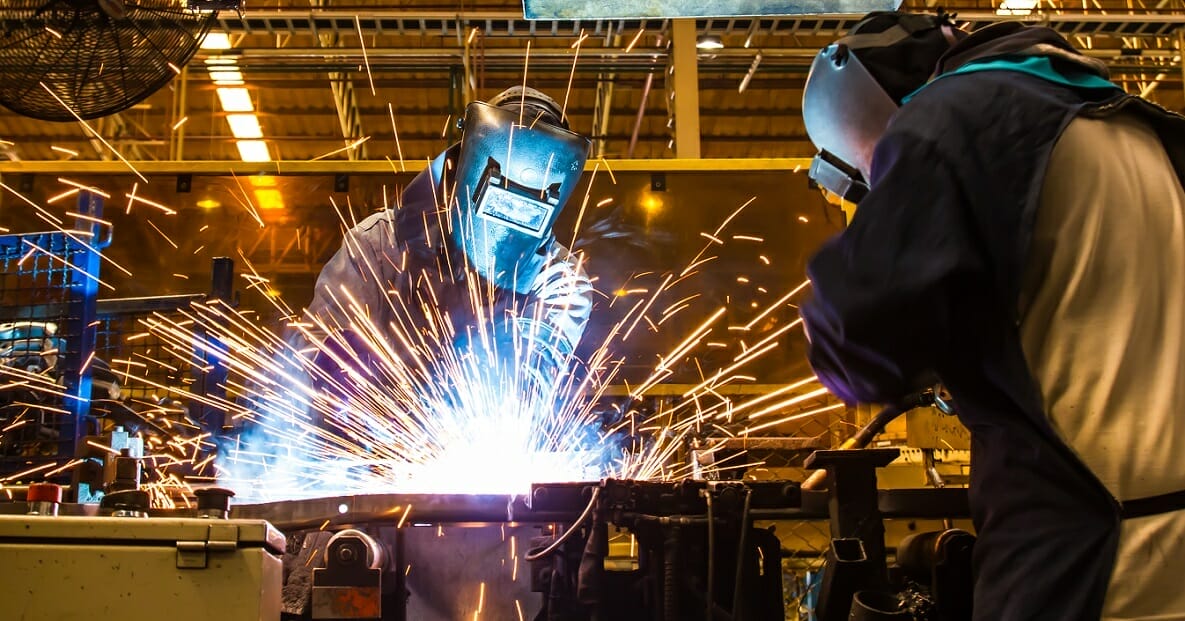3 Best Methods For Stainless Steel Welding
Welding stainless steel is the primary joining process used in stainless steel fabrication. Stainless steel is a commonly utilized engineering material due to its high corrosion resistance and cryogenic qualities. A wide range of industries such as food, petrochemical, chemical, oil and gas, etc. use stainless steel.
Other than learning the safety practices and knowing the good places where to best purchase stainless steel and welding equipment, discussing about welding methods is required before embarking on a project. You can learn the best stainless steel welding methods below.

1. Gas Metal Arc Welding Method (GMAW)
Metal Inert Gas (MIG) welding and Metal Active Gas (MAG) welding are both versions of the Gas Metal Arc Welding (GMAW) method, which is more generally known as in the USA and other countries.
MIG/MAG welding can be used to both thin sheet metal and thick section metal. An arc is created between a wire electrode and the workpiece, melting both together to form a weld pool. In addition to providing heat, the wire acts as a filler metal for the weld joint. To weld, the wire is supplied through a copper contact tube (contact tip). A shielding gas surrounds the wire and protects the weld pool from the surrounding atmosphere. The selection of shielding gas depends on the material and application. A motor feeds the wire from a reel, while the welder drives the torch along the joint line. Wires can be solid or cored. Consumables are often cheaper than those for other processes. Process is highly productive due to constant feeding.
The power supply controls the wire feed rate and arc length, while the travel speed and wire position are regulated manually. When not directly handled by a welder, the process can be automated, but manual adjustments may be required during welding. Automatic welding is described as needing no manual intervention.
What is the MIG/MAG Difference?
The shielding gas type used is the only distinction between the two.
The shielding gas composition affects arc stability, weld profile, metal transfer, penetration, and spatter.
- Metal Inert Gas (MIG)
This type of welding uses inert gases or gas combinations as shielding gases. Argon and helium are inert gases commonly used for MIG welding non-ferrous metals like aluminum. Inert gases do not react with filler or weld pool.
- Metal Active Gas (MAG)
This type of welding uses active shielding gases. In the weld pool, these gases can react with filler metal, changing its chemical and/or mechanical properties.
2. Metal Arc Welding Method (SMAW)
This method of welding is done by hand using a stick. The stick creates an arc between the metals to be connected.
This is commonly used to weld steel, iron, and mild steel pipe using the open V-shaped groove.
The welder must be able to weld to a level that passes a destructive form of bend test. Shielded metal arc welding is used to join alloyed steels, carbon steel, stainless steel, ductile iron and cast iron. Aluminum is rarely utilized.
SMAW Process Limitations
- Low-melting-temperature metals like zinc, tin and lead are not SMAW welded. Because these metals have low boiling points, the strong heat of the SMAW arc causes them to vaporize. This method is also unsuitable for welding reactive metals like zirconium, titanium, niobium due to the lack of inert shielding.
- The procedure generates lower deposition rates than GMAW and FCAW. The maximum usable current limits the deposition rate. The maximum usable current limits the deposition rate.
- In SMAW electrodes, excessive heat is generated due to lengthy electrodes or high current. After welding begins, the covering’s temperature rises to a point where it prematurely breaks down. This breakdown weakens the arc characteristics and lowers shielding. The quantity of current used is controlled to prevent electrode overheating and covering breakage. Due to the restricted usable current, deposition rates are lower than GMAW or FCAW.
- Stub loss is another concern. The stub is the discarded SMAW electrode grip end. It is made up of the core wire and a portion of the covering length. Stub loss reduces deposition efficiency but not rate. Longer stub losses reduce deposition efficiency.
- The operator factor for SMAW is usually smaller than for continuous electrode processes like GMAW or FCAW.
Low deposition rates and a smaller operator factor detracts the use of SMAW when a significant volume of filler metal is required. In these instances, weld completion rates may be too slow, and weld costs may be too expensive.
3. Flux Cored Arc Welding Method (FCAW)
This was created to replace shield welding. The semi-automatic arc weld is popular in construction due to its speed and portability. This approach can be used in different welding projects. Variables can depend on the welder model and wire type used.
The various voltage levels, operating angles, polarities, and wire feed speeds add to the flexibility. The freshly joined metal cools faster due to faster welding speeds. When using flux cored wire, the welder must inspect for porosity in the welded joint.
Conclusion
Stainless steel welding is more difficult than other welds, yet it is possible. You can make a strong, durable weld by using the right equipment, temperature control, and filler material.
















